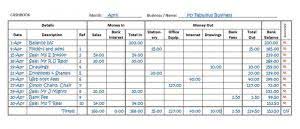1 6 Unadjusted Trial Balance Financial and Managerial Accounting

Thus, when a difference is divisible by 9, compare the trial balance amounts with the general ledger account balances to see if you made a transposition or slide error in transferring the amounts. This is the moment of truth—if your bookkeeping is accurate, these two totals should be equal. The trial balance serves several crucial purposes in the accounting process. First and foremost, it helps identify mathematical errors in your bookkeeping.

Step 1: Calculate the Account Balances for Your Ledger Accounts
Different countries may have specific formats and regulations regarding trial balances, influenced by local accounting standards. You could also take the unadjusted unearned revenue trial balance and simply add the adjustments to the accounts that have been changed. In many ways this is faster for smaller companies because very few accounts will need to be altered.
Requirements for Preparing a Trial Balance
A trial balance is a fundamental accounting tool designed to ensure the accuracy of financial records. It acts as a checkpoint, summarizing all ledger accounts at a given time to confirm that debits and credits are balanced. Without this critical step, businesses risk making decisions based on inaccurate data.
What is the purpose of a trial balance?
- As the bookkeepers and accountants examine the report and find errors in the accounts, they record adjusting journal entries to correct them.
- Companies can use a trial balance to keep track of their financial position, and so they may prepare several different types of trial balance throughout the financial year.
- At period end, asset, expense, or loss accounts should have debit balances; liability, equity, revenue, or gain accounts should have credit balances.
- After preparing your trial balance this month, you discover that it does not balance.
- The balance sheet is derived from the trial balance and is used by external stakeholders, such as investors and creditors, to assess the company’s financial health.
- A trial balance is an important step in the accounting process, because it helps identify any computational errors throughout the first three steps in the cycle.
The trial balance is usually prepared by a bookkeeper or accountant who has used daybooks to record financial transactions and then post them to the nominal ledgers and personal ledger accounts. The trial balance is a part of the double-entry bookkeeping system and uses the classic ‘T’ account format for presenting values. The bookkeeper will still need to examine the accounts thoroughly again before proceeding to the next step of creating adjusting entries for trial balance order the period. The adjusting entries are shown in a separate column, but in aggregate for each account; thus, it may be difficult to discern which specific journal entries impact each account. While traditional trial balances are indispensable, automating this process can revolutionize your financial operations. Enter Paystand, where cutting-edge automation eliminates the time-consuming manual steps of reconciliation and accounts receivable preparation.
Trial Balance Examples: Unadjusted, Adjusted & Post-Closing
It primarily detects errors in transaction QuickBooks ProAdvisor recording, such as posting errors, transposition errors, and omissions. Moreover, the trial balance provides the necessary data for preparing essential financial statements, such as the income statement, balance sheet, and statement of cash flows. After the all the journal entries are posted to the ledger accounts, the unadjusted trial balance can be prepared.

The trial balance should have all the ledger accounts and their respective balances. This step helps organize the data before proceeding to the final calculation steps. A trial balance is much more than an accounting formality; it’s a pivotal tool for fostering financial accountability and accuracy. By serving as both a diagnostic tool and a preparatory step, it empowers businesses to identify errors early, maintain compliance, and lay a strong foundation for financial reporting.

Typical Debit and Credit Account Types
It is a part of the double-entry bookkeeping system that gives a basis to financial statements’ accuracy. A trial balance is a fundamental accounting report that lists the ending balances of all general ledger accounts within an organization’s accounting system at a specific time. This report serves as a crucial checkpoint for ensuring the accuracy and integrity of the financial data before proceeding with the preparation of financial statements.
